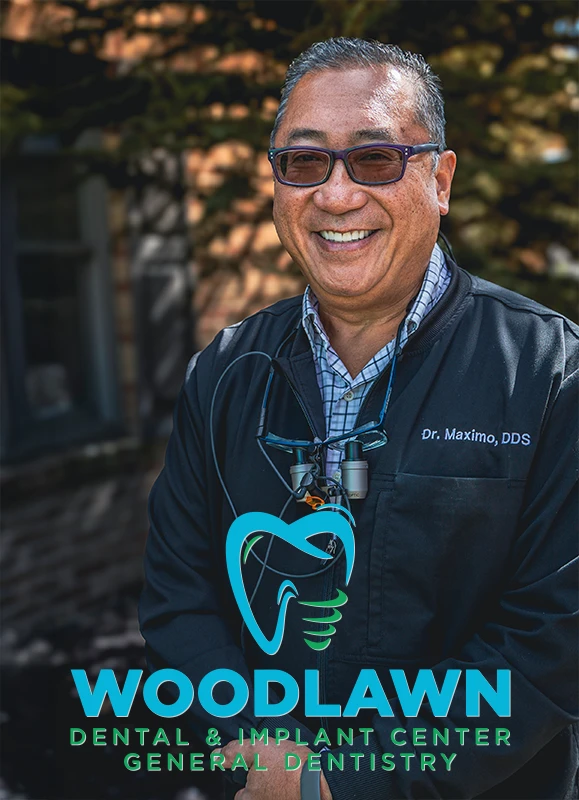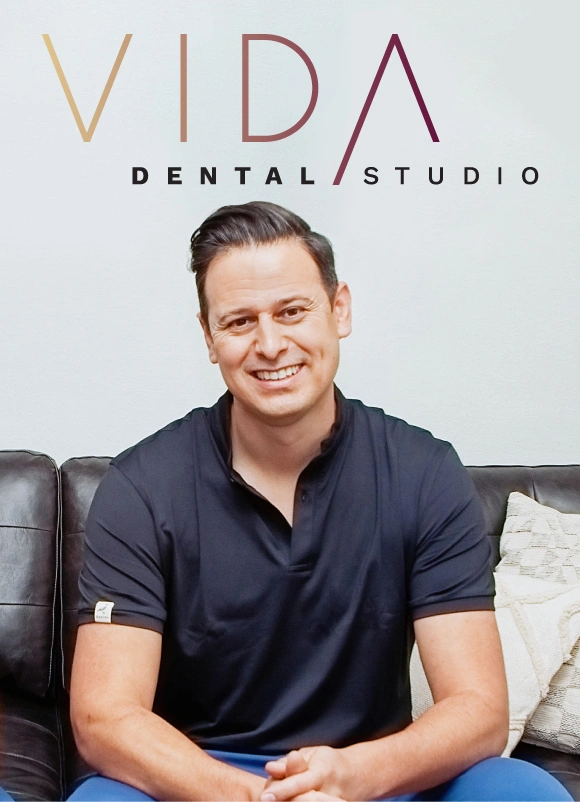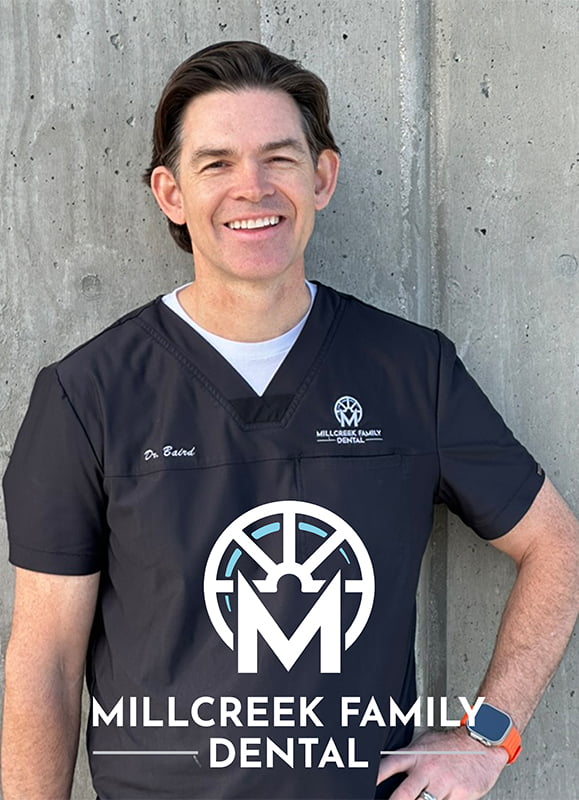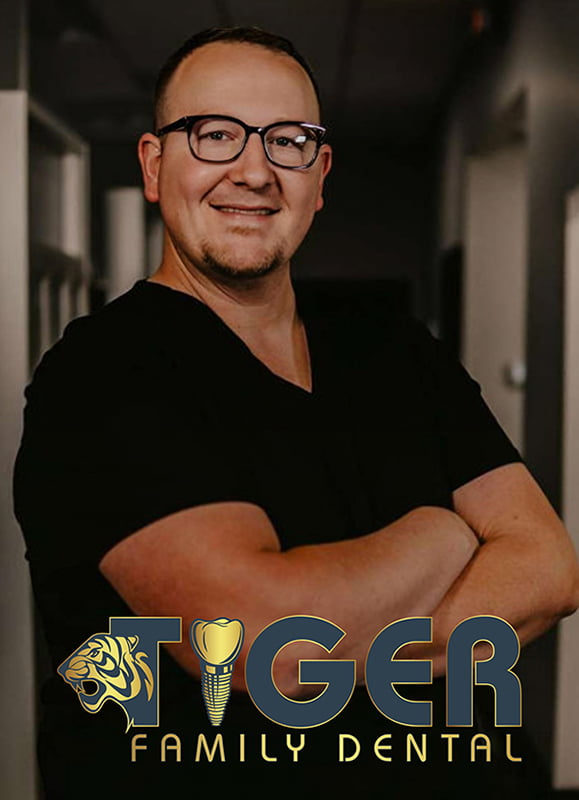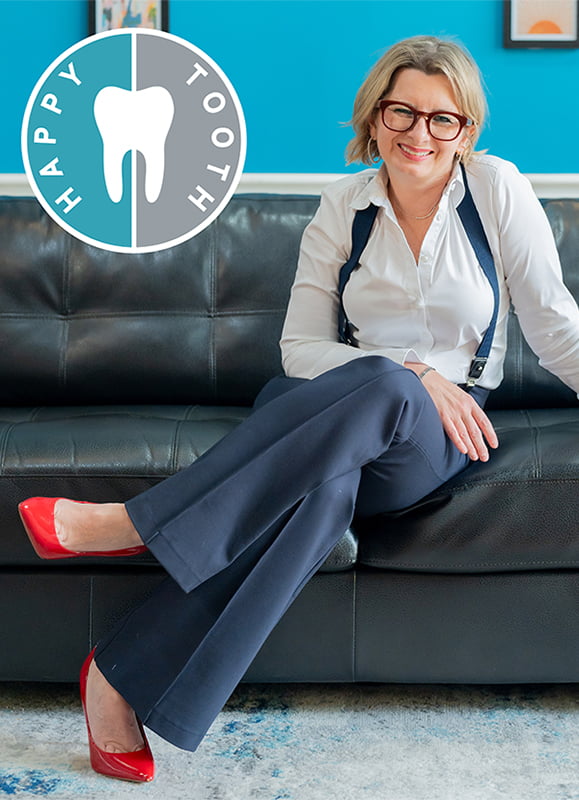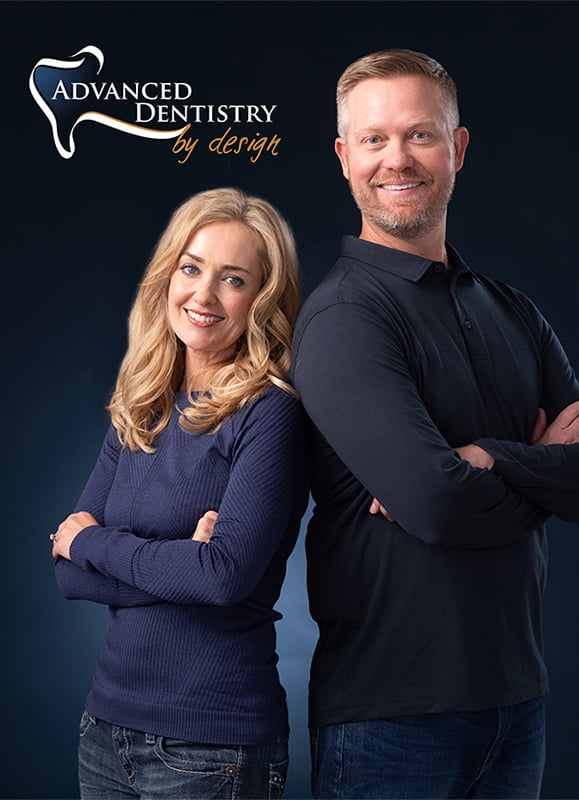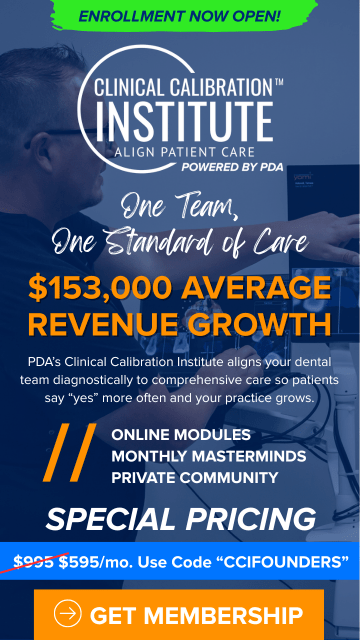Episode 187 – Requested Replay: Patients & Risk Responsibility
“I hold patients’ feet to the fire on this because I won’t replace dentistry that’s not my fault.” ~Dr. Bruce B. Baird
We all have them…the patients who are frustrated with dentists because the work is always breaking down and needs to be replaced.. But these are the patients who deal with the stress in their lives by grinding their teeth and I’ve found it to be one of the most frustrating parts of dentistry.
You want to give your dentistry a chance to last a lifetime and there’s no reason it shouldn’t last a lifetime if the patients take care of the work you do to help them get healthier.
Most of the time when dentists talk to patients with functional wear, we give them an engineer’s answer and solutions. Sure we tell them the science behind what is going on and why, but there’s not a lot of discussion of who’s problem this is and what they can do about it. At the risk of sounding like a broken record, I want to remind you that it’s not your fault. You are only responsible for the work you do.
So how do you get patients to take responsibility for their risk and take care of the good dental work you do? Join me today as I talk through how I effectively communicate with patients about the wear on their teeth so they can make the best choices:
- The simple question you can ask patients to remind them of their responsibility
- A problem I keep an eye out for when I see severe wear
- My favorite device to help patients with functional risk
Never miss an episode! Subscribe on iTunes & Spotify. Visit us at http://www.productivedentistpodcast.
EPISODE TRANSCRIPT
Dr. Bruce Baird
Hello, this is Dr. Bruce Baird, again, The Productive Dentist Podcast, we’re going to continue today with the risk factors and the things that I work with my patients on so that they understand that it’s their problem, not mine. It was again an epiphany when I heard John Coy speaking about this several years ago, or many years ago, and it really wasn’t about the risk factors it it just became in my mind, “Oh my gosh, it’s not all my fault,” and so today we’re going to talk about functional risk and functional risk are those patients that are grinders clinchers, that carry their stress with their teeth and the muscles related to that. I always ask the question during seminars, I go, “How many of your patients do you think need to be wearing occlusal guards?” And I have answers from everyone to 90% I don’t know what the actual statistic is. I know that if you look at the number of anti-anxiety medications that people are taking, and the weight game that people are seeing across the world, and in particular in the United States and what does that have to do with anything? Well, that’s one of the other risk factors that I’ll talk about, which I call physiologic risk, but when I’m looking at these cases, and you see where severe where these patients can have all types of symptoms and it can be from TMJ, TMJ pain to you know, limited opening and we use a couple of different types of appliances. When we’re talking about patients who have ruptured. The MTI, which many of you are familiar with, I’ve had very good success for migraine sufferers using an MTI. Truthfully, I’ve also seen some changes in their bite in their anterior bite with the opening of the bite and shifting of teeth. I think these patients are in particular, real strong cultures and they put a lot of pressure down you see the wear on the MTI then there’s the opportunity to use a full arch occlusal guard or a night guard. I tried to explain to patients, you know, and I always tell them kind of the same story as to say, you know, they tested my bite back in 1976, the average person bites at around 125 pounds per square inch and I bite it over 1000 and I I tear stuff up in my mouth, I’ve got extremely strong jaws. So you know, I’ve torn up crowds, I fractured, fractured a tooth, actually two teeth just with clenching and grinding. I’m much more of a clencher than I am side to side grinder, I don’t see a lot of wear with my own personality but you see those patients who are they’ve got huge masseter muscles there are, you just look at their face and you know, you know, their grinder and a clencher or you’ll ask them questions when they swallow you just watch these masters and the temporalis muscles on the side of the head just bulge. So you can kind of tell also when you take a CT scan or a panel you can see bone density that is, you know, extremely dense, those are the things that you have to start thinking about but when I tell patients I said you know, tell them that story that I bite at 1000 And I tell them, you know you probably don’t bite at 1000 but you’re probably biting at four to 500 pounds per square inch or you have where of somebody who was born during the Civil War and others if you were alive for 150 years, that’s how much were you have on your teeth and it’s taken many years for you to grind through the hardest substance in the body, which is a mammal but now you’re into the soft part of the tooth and I’ve seen somebody grind teeth away, you know, a millimeter every year and a half or two years, as opposed to small tenths of a millimeter when they’re going through their enamel. So it’s something that absolutely has to be part of our diagnosis and treatment plan.
When you look at dental implants, we know that implants don’t have a periodontal ligament, they’re rigid, they’re fixated, there they are, you know, the bone, the bone has grown to them. They are like an ankle close tooth there, they don’t have those ligaments. So when you squeeze your teeth together, the teeth have, again, what I tell patients is kind of like God gave us our own shock absorbers and so what happens is these teeth will intrude but the implants won’t and it’s very, very important, as well as with occlusion on implants, which I use a T-scan so I can watch the teeth hit and then the last thing hitting I want to be the implant but also I want my implant patients wearing occlusal guard and occlusal guard. Now, one of my favorite appliances is actually what’s called an E Appliance and I can get you more information on that just by sending me an email from bruce@productivedentist.com but the appliance is an upper and lower appliance. It’s fairly thin, but it has a pyramid in the anterior. So it helps my full mouth rehab patients my implant patients and what happens is its kind of like an MTI but it’s an upper and lower my patients love it and you would think, “Oh my gosh, having to wear two of these is much harder and much more difficult.” Well, that’s not the case. That’s not what we found in clinical practice.
So they wear the MTI, an MTI modified, which would be full arch upper and lower with a pyramid in the front, which is adaptable to when they go into protrusive or when they bring their job back in, retreated. They’re always touching that pyramid. So they’re, they’re given pretty much free rein, but also the teeth are fixed, and they’re not moving around. So that is something that has become extremely beneficial for my patients, I charge about double what I charge for a regular occlusal guard but when these folks are doing when we’re doing full mouth rehabs, or they have TMD problems or TMJ issues. I really liked that appliance what do we do for these patients restoratively when they have, you know, when they’re bruxer or when they’re clencher? Well, they’re really, those are two different situations. You know, the bruxer is that one that you see, they may have had cuspid rise at one point in time but now all of a sudden, those cuspids are just getting wiped out and it’s very interesting when you’re trying to make the determination is this normal function or is this part function, just get the patient to say, “Touch these two teeth together, you know, touch your, you know, upper and lower eye teeth together, and we’ve got a mirror out.” They don’t even know how to do that, you know, they just kind of funny you look out and they’re doing like, “No, I don’t ever bite like that.” Well, that’s parafunctional what you’re doing in the nighttime when you don’t even know it, you’re sliding that jaw way to the side, and see what happens now get them to move that jaw to where it finally does touch and I said, “Do you ever do that during the day?” And they go, “No, I don’t think so,” and I go, “Okay, well, this is a nighttime habit.”
The other thing that’s very important to understand is when you’re helping treat patients that have TMD problems, you know, there’s lots of therapy, there are lots of, you know, whether it be injecting with you know, with different materials, I’m trying to think of what it is but anyway, when you’re doing that, or you’re having them in appliance therapy, sometimes it’s an occlusion related, I will always take these folks and put them on the T scan and try to find out are they hitting predominantly in one area or more on one side than the other but these folks have to be wearing something to protect the dentistry that you’re doing and in the long term, I always kind of get a kick out of it when you ask the patients and hygiene and my hygienist asked this question and I asked this question, “Very simply do you wear your night guard?” And they go, “Yeah, yeah, I do.” That means they don’t even know where it is. That means the things are probably broken. Or the dog eating and I said really? Are you wearing it every night? Well, no, honestly I don’t wear it as much as it doesn’t feel right. It’s just okay. It will bring it in because remember, what I’m doing is if you’re not following through with the risk factors if the patient’s not following through with handling their risk factors, meaning, you know, coming in every three months, if they’re a high perio risk, or not drinking Dr. Pepper anymore, if there are a high decay or erosion risk, you know, if they’re not doing it, they’ll look at you and they’ll look at your at and they’ll say, “Oh, yeah, no, I, you know, I’m still drinking just a little bit.” Well, that means all bets are off. That means my little five-year guarantee that I talked about, is no longer guaranteed and my hygienists are very well versed and saying, Well, you realize that these risk factors are the things that caused your other teeth that God gave you to break down and Dr. Baird will not, you know, guarantee this work if you’re not wearing your night guard if you’re not coming in on your three, my three care if you’re high risk if you’re not, you know, stopping to drink, or if you’re not using your carry free and so these are things that I, you know, I hold their feet to the fire. Why? Because I’m not going to replace dentistry. That is not my fault. The reason it broke, and I’m just not going to do it and again, I told you guys in previous episodes, that man, I used to feel guilty all the time when something failed, I always thought it was my fault but the truth is, it’s really not our fault. So from the from conclusion standpoint, and from the bite, that those are really, really, really well, it’s as important as the others, it gives you the opportunity to make your dentistry have the chance of lasting a lifetime because if you eliminate these risk factors, there’s no reason why your dentistry shouldn’t last a lifetime and our patients, they’re frustrated, they’re frustrated and going to the dentist here, a dentist’s there and a dentist here but there, they’ve had a whole lot of different advice given but most of the time, it’s usually an engineering solution. Yes, I can fix it. No, I can’t but not a lot of discussion about whose problem it is and I think that’s we’re missing the boat there greatly.
The other thing that when I see somebody who’s got severe wear another thing hits me is, is this patient apeanic? Are they having trouble when they’re sleeping, you’ll see where on folks who are, in particular, as I’ll see it in the anterior, where they’re shoving their jaw forward at night trying to get oxygen trying to get air and you’ll see a pattern like that? I’ll also see significant erosion on the posterior. That’s if they’re when they’re gasping for air, the epiglottis pops and you’re getting stomach acid, which is tending to kind of pool around the posterior. So I’m looking for the signs and symptoms, I also look at the patient and I look at him and say, yeah, they have a 17-and-a-half inch neck more than likely maybe an 18, they’re a big person that doesn’t mean 100% Sure they have apnea but those are the type of folks that if you ask them a simple question, “Do you snore at night?” And they say, “Yes.” If someone has a 17-and-a-half-inch neck, and they snore, they’ve got a 95% chance of having sleep apnea. Well, that’s pretty significantly high. So I know who it is and who it is and if it’s a female, most females are going to be after, after menopause but if they’ve got a large neck, and I’m seeing where, and I will begin the process of talking to them about apnea, which is the fifth risk factor, and I’ll be talking about that in a future podcast.
So, you know, just remember, I mean, how many of your patients need occlusal therapy, or an occlusal guard or something? I, I would say that we’re probably way behind on getting people taken care of. I’ve had, I’ve had patients that have consistently worn their occlusal guard for 25 years, I mean, we’ve replaced them, and those patients can’t live without them. I tell patients if they want long-term success for their teeth, and this money you’re spending with us, I just don’t want you to waste it and so that’s where this occlusal therapy is very, very helpful. Patients say well, “I get on everything.” Well, nowadays you can scan, you don’t have to take an impression and gag somebody you can actually scan for the use of appliances. So anyway, that’s that is our that’s our episode. This time is on occlusal therapy.
If you have questions, feel free to send me an email at bruce@productivedentist.com I’ll answer them on a future podcast where we just have a Q&A on podcasts. So we’ve been getting multiple questions in and that will see that in the future. So look forward to the next time we’re together and make it a great day. and luck is not by chance it’s earned. So see you soon.
Regan
Hello, Regan Robertson here from Productive Dentist Academy. Do you ever have that nagging feeling that you deserve more, more case acceptance more time with your family, more profit without sacrificing excellent patient care? I have great news for you. You can join your favorite PDA podcast hosts Dr. Chad Johnson, Dr. Bruce B. Baird, Dr. Victoria Peterson, and myself at a PDA productivity workshop in 2023. This is a full emergency where we give you the resources and tools you desire. So you can align your team streamline your systems and consistently produce more without raising your fees and without more time in the chair. This is the nation’s number one dental business course and the best part is this program guarantees your dental practice gross. We have two events in 2023 March 2 to the fourth and September 28 to the 30th fair warning, these events will quickly March is already half full as I record this so grab your registration today. If you have to have it right now you can email directly Brent brent@productivedentist.com To save your seat and hurry these events Phil fast.
Dr. Bruce Baird
Thank you for joining me for this episode of The Productive Dentist Podcast. If you found this episode helpful, make sure you subscribe and pass it along to a friend. Give us a like on iTunes and Spotify or drop me an email at podcast@productivedentist.com don’t forget to check out other podcasts from the Productive Dentist Academy of productivedentistpodcast.com Join me again next week for another episode of The Productive Dentist Podcast
Have a great experience with PDA recently?
Download PDA Doctor Case Studies
